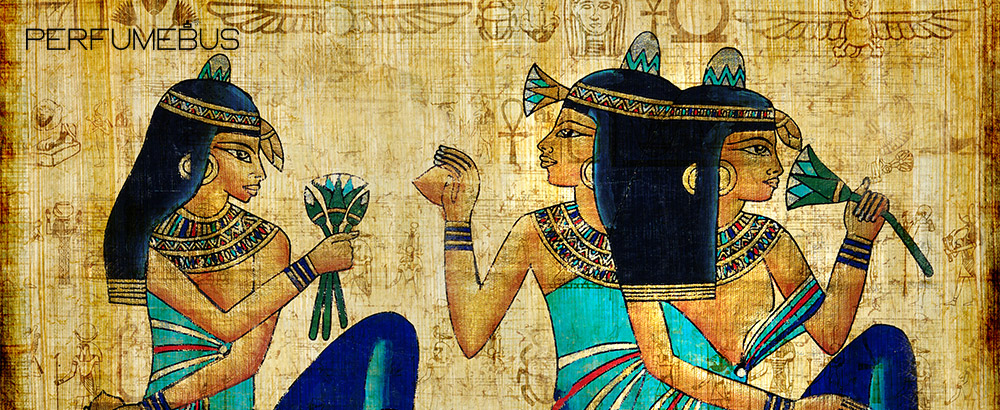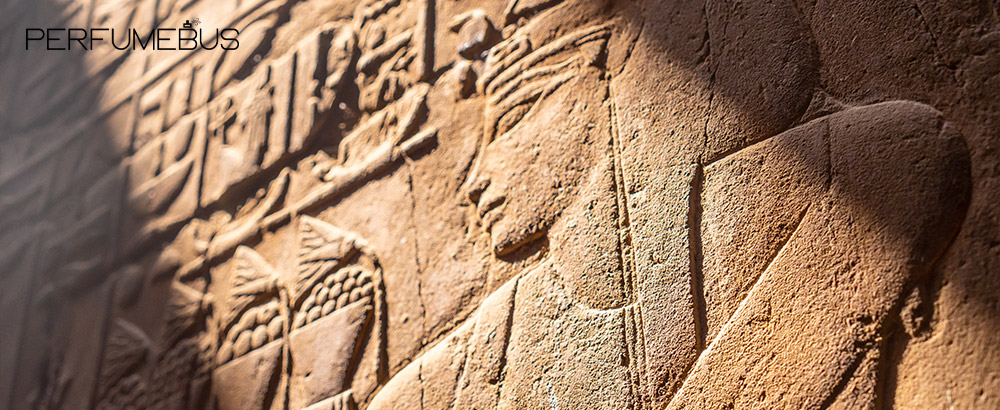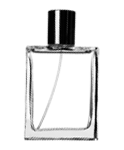Basket Subtotal ( 0 Item ) :
$0.00Table of Contents
- The History of Perfume - How It All Started in Ancient Times
- When Was Perfume Invented?
- How Perfume Traveled Through History - From Ancient Egypt to Rome
- The Oldest Perfume Ever Found
- The Return of Fragrance in Europe
- The Modern Evolution of Perfume
- The Evolution of Fragrance - From Natural to Synthetic
- The Early Days of Perfume Making
- The Timeless Journey of Perfume
History of Perfume: A Journey Through Time
For millennia, perfume has tantalized humanity, merging art and science with the luxury of one sense. The history of perfume is a fascinating journey through time, from ancient rituals to modern-day indulgence, marked by cultural significance, technological advancements, and personal expression.
From its roots to modern-day artisanal perfumeries, what follows is the fragrance history, one of the most personal and impactful modes of self-expression.
The History of Perfume - How It All Started in Ancient Times
Perfume has existed for thousands of years, its use dating as far back as the earliest human civilizations. The ancient Egyptians were some of the first to create perfume, employing scents not only for personal hygiene but also in religious practices.
They bathed the body and made offerings to their gods with incense and oils infused with aromatic plants and resins. The term “perfume” itself is derived from the Latin perfume, meaning “to smoke through,” an allusion to fragrant smoke incense used in ancient rituals.
When Was Perfume Invented?

The perfume was created in ancient civilizations, with the earliest known perfume maker being a woman chemist named Tapputi from Mesopotamia. Her methods of making perfume can be seen in a cuneiform tablet dating from the 2nd millennium BC.
Tapputi was one of the first fragrance distillers, using stills to distill flowers, oils and aromatic substances. In other cultures, like the ancient Egyptians, perfumes were used in both settings as a luxury but also used spiritually and for medicinal purposes.
Tapputi may be credited with inventing perfume, but there were various other contributions to the practice from cultures around the world, including Mesopotamia, the Indus Valley and Ancient Egypt. Indeed, making perfume was an involved process of distilling flowers, woods and spices and mixing those aromatics to form odours pleasing to the nose.
Perfume came into its own in Egypt, where it was used only by royals and elites. Egyptians used scents in religious ceremonies, personal grooming and even the embalming process. In Egyptian society, perfumes developed a relationship with luxury and esteem.
They employed the use of natural substances such as myrrh and frankincense, both of which were regarded as holy. Such exotic materials were often reserved for the favour of the gods.
Kyphi, a complex combination of resin, herbs, and spices was one of the most famous perfumes in Egyptian history, used in religious ceremonies. Kyphi perfume was described as able to invoke the gods. It demonstrates how sacred perfume was in ancient Egyptian society, combining both the spiritual, the taste, and the sensory experience.
How Perfume Traveled Through History - From Ancient Egypt to Rome

As trade networks grew, the popularity of perfumes spread with them. Ancient Persians played a major role in the evolution of the Perfume-making process. They had popularized the process of distillation, which enabled them to obtain a more purified extract of fragrant oils.
A more sophisticated distillation method was adopted by the Persian chemist Avicenna (Ibn Sina), which extracts essential oils, such as rose oil, which remain used today.
Greek and Roman ancient civilizations had a big role in the development of perfume as well. Perfumes, for example, were used in daily life by Romans in public bathhouses, a vital social space in Roman society.
Before bathing was common, fragrances were used to cover body odours. Greek and Roman perfumes were made from flowers, root and resin — and the making of perfume became a highly regarded craft. For instance, the Roman Emperor Nero was a famous lavish spender of perfumes, a trend that continued amongst the nobility in the Roman Empire.
The Oldest Perfume Ever Found
In 2003, archaeologists discovered what are thought to be the world’s oldest surviving perfumes in Pyrgos, Cyprus. These perfumes, which could be more than 4,000 years old, were discovered in a complex that consisted of a perfumery with over 60 stills, mixing bowls and perfume bottles.
Perfumes of the times were also made from a range of floral, food, environmental, and animal ingredients, including almond, coriander, myrtle, conifer resin, and bergamot, she said in a statement, providing a smattering of cases, here's one of the cases.
The Return of Fragrance in Europe
In Italy and France, it was during the Renaissance period that perfume began to be a symbol of prestige and refinement. It was during this time that perfume-making was transformed into more of an industry, with the Grasse region in France becoming the centre of the European perfume trade.
Flower cultivation, particularly jasmine, rose, and lavender, became an important part of France's economy. The emergence of personal perfumes was in line with the blossoming culture of courtship, and fragrances were now worn not only for hygiene but for cultivating sexual charm.
In Italy, Catherine de Medici’s perfumer, René the florentine, is credited with bringing advanced perfume to the French court. His fragrances were so special that they were highly desired all over Europe.
The Modern Evolution of Perfume
Perfume made its way from a rare luxury of the gods to an affordable consumer product by the 17th- and 18th centuries. One of the major turning points in the history of perfume came in 1693 when Giovanni Paolo Feminis invented eau de cologne.
Eau de cologne, a blend of alcohol and essential oils, was lighter, and more refreshing than the thick, oily perfumes of the past, making it popular among both men and women.
The Industrial Revolution of the 19th century paved the way for perfumes to be mass-produced and, in turn, more affordable to greater segments of the population. It was not until new chemical compounds became available that synthetic fragrances could be created, increasing the range of perfumes to choose from.
The late 1800s gave rise to some of the world’s most storied perfume houses, including Chanel, Guerlain, and Dior, which continue to be forced in the perfume world today.
The Evolution of Fragrance - From Natural to Synthetic
One of the most interesting issues in perfume history is the advancement of fragrance. Perfumes in ancient times were mostly derived from flowers, herbs and resins, but with the improvement of the methods of making perfumes, the scope of substances used in perfume-making expanded.
Starting in the 19th century, with the availability of synthetic materials like aldehydes and musks, the fragrance industry began to flourish. These synthetic ingredients permitted the creation of exceedingly intricate and longer-lasting scents that had previously been unattainable for perfumers.
The Early Days of Perfume Making
Ancient history states that perfumes were made from tree bark, flowers, leaves, roots, and seeds. It's widely accepted that the practice of making perfume first began in Egypt and Mesopotamia and later established itself among the Persians and Romans.
A perfume was much more than just a means of enhancing one’s scent, at the time it was crucial for most religious rites and ceremonial practices. For example, due to its sacred properties, myrrh and frankincense were burnt during religious practices. Other oils and balms made from roses and peppermint were used for anointing the body.
When trade routes opened, so did the number of ingredients that helped shift the perfume world. Raw materials including herbs and exotic spices from all over the world began to shape what the perfume world was. Simple herbal medicine was a product that was born out of this era, where flowers and herbs would be put in water and then used to construct other perfumes.
Perfumes were put in wooden and clay containers. But as time went on the need for perfume soared, and so did the containers; First were Colored glass bottles and hand-painted vases, but soon they were replaced by the Holy Grail of perfume bottles, gemstone containers.
Want to learn how perfume is made today? Check out our How Perfume is Made guide for all the details!
The Timeless Journey of Perfume
The chronicle of perfumes is not just about scent but engenders notions about humanity, culture and technology over multiple epochs. Perfume, from its primitive roots of using fragrant resins in ancient Shrines to the elaborate perfumeries in France today, has become an art and part of life.
With the expansion of perfume across cultures, it evolved from being a spiritual tribute to one for the elite class, which later turned to be an age of globalization. Innovation in the distillation process, synthetic materials and the growth of famous perfume brands have revolutionized perfumery into an industry.
Nevertheless, in all that has changed, one thing remains: perfume has an uncanny ability to evoke emotions linked with a person’s sense of self and history. Beauty has always been crafted and shared throughout the history of scent, the only difference being the methods of delivery. Beyond desire, beyond status and materialism, perfume touches the essence of who we are.










Leave us a comment